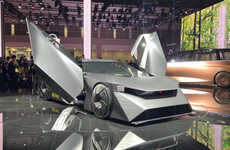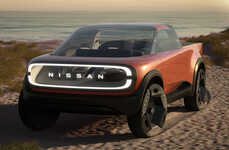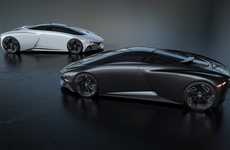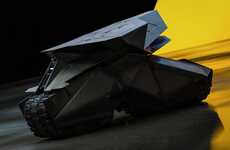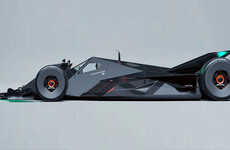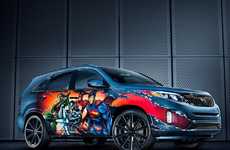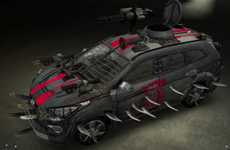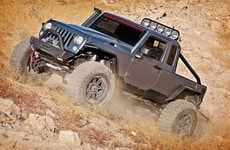
The Nissan Guardian is a Leopard-Inspired Off-Roader
Michael Hines — January 11, 2012 — Autos
References: tuvie
The noble leopard serves as the inspiration for Ming-deng Tang and Bo-jyun Jhan's Nissan Guardian concept car. The Guardian was designed for Nissan's "Future Car Concept Design" challenge in Taiwan, which sought a car for the year 2030.
The Nissan Guardian is an off-road vehicle with a serious case of awesomeness. The Leopard is powered by a hybrid hydrogen fuel-cell and electric engine and features rooftop solar panels. The car is designed to connect with the driver by monitoring his/her blood pressure and heart rate; the speed and handling of the car are affected accordingly. The vehicle's unique doors open in a way that allows both the driver and passenger to escape should an emergency arise.
The Nissan Guardian borrows the two-tone look of the leopard (black and yellow) and its paws for its design. The wheels of the Guardian are designed to adapt to changing terrain, just like a leopard's paws.
The Nissan Guardian is an off-road vehicle with a serious case of awesomeness. The Leopard is powered by a hybrid hydrogen fuel-cell and electric engine and features rooftop solar panels. The car is designed to connect with the driver by monitoring his/her blood pressure and heart rate; the speed and handling of the car are affected accordingly. The vehicle's unique doors open in a way that allows both the driver and passenger to escape should an emergency arise.
The Nissan Guardian borrows the two-tone look of the leopard (black and yellow) and its paws for its design. The wheels of the Guardian are designed to adapt to changing terrain, just like a leopard's paws.
Trend Themes
1. Hybrid Hydrogen Fuel-cell Technology - The use of hybrid hydrogen fuel-cell and electric engine technology in off-road vehicles has the potential to revolutionize the automotive industry.
2. Connected Car Technology - The integration of biometric monitoring systems in vehicles presents disruptive innovation opportunities for enhancing driver safety and personalized driving experiences.
3. Adaptive Wheel Design - The development of wheels that can adapt to changing terrain, inspired by leopard paws, offers potential advancements for off-road vehicles and other industries that require versatile mobility solutions.
Industry Implications
1. Automotive - The automotive industry can explore the implementation of hybrid hydrogen fuel-cell technology and connected car features to create more advanced and efficient vehicles.
2. Healthcare - The integration of biometric monitoring systems in vehicles opens up possibilities for healthcare providers to leverage connected car data for remote patient monitoring and emergency medical services.
3. Outdoor Recreation - The adaptive wheel design inspired by leopard paws can find applications in the outdoor recreation industry, allowing for improved performance and safety in off-road vehicles and equipment.
3.3
Score
Popularity
Activity
Freshness

